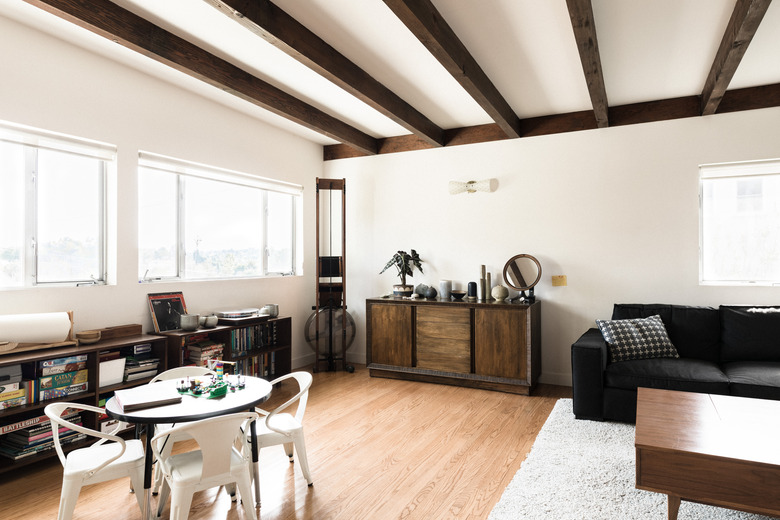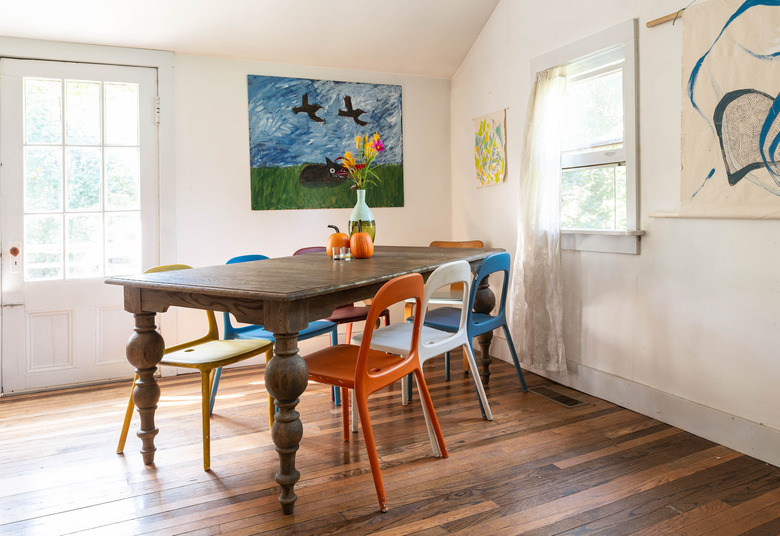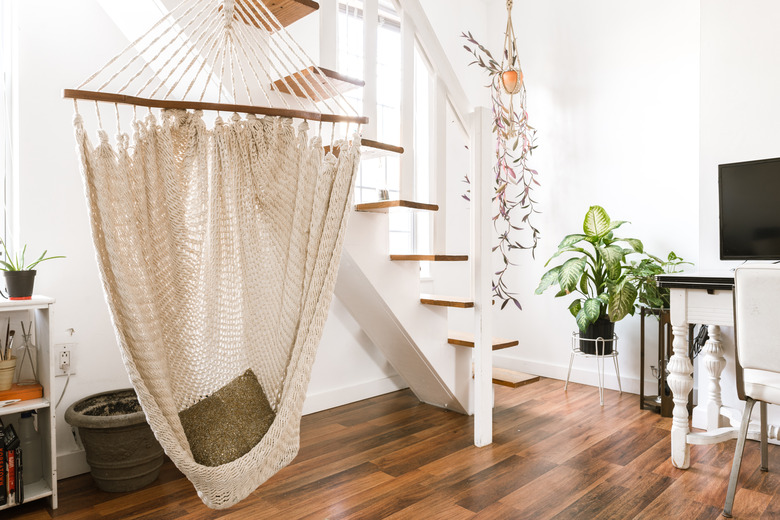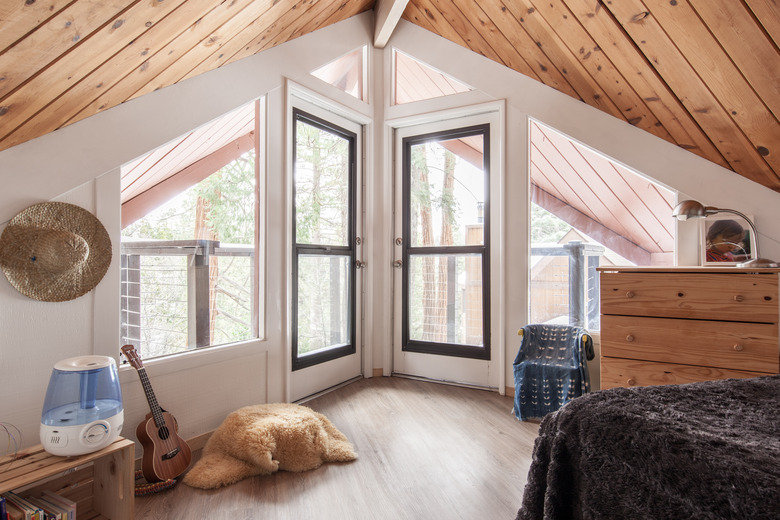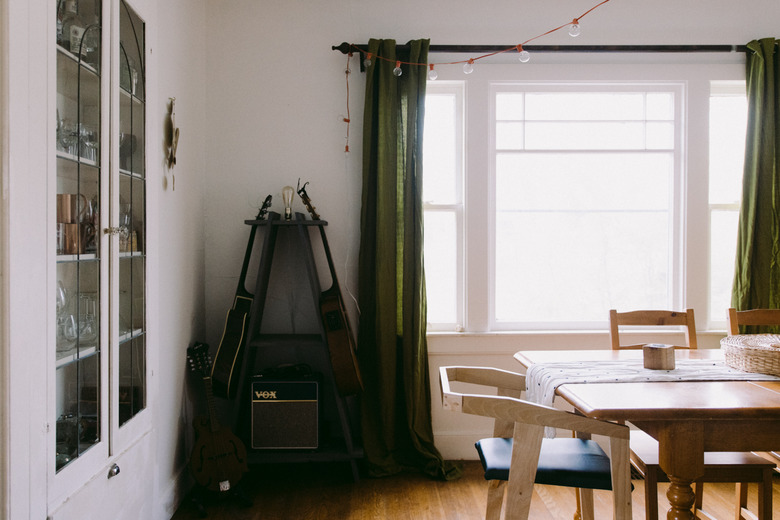Red Oak Flooring: A Homeowner's Guide
Red oak is one of the most popular woods used in hardwood flooring and is perhaps the most popular option in the United States, according to the Wood Database. It is a relatively affordable option among all hardwood flooring materials, it has an attractive grain pattern, and it is very durable. In fact, red oak hardwood flooring is so popular that it often serves as the standard against which other hardwoods are measured.
Red Oak Vs. White Oak
Red Oak Vs. White Oak
The majority of oak tree species in America are broadly grouped as either red or white oaks, both of which are popular options when it comes to hardwood flooring. While still alive, the differences between the tree groups can be hard to distinguish, as the bark of the red oak group is not truly red, and the bark of the white oaks are not truly white, although the red oak's bark is slightly darker than that of the white oak. Indeed, when cut into lumber the two groups can be difficult to distinguish from one another as well. Red oak wood flooring has a reddish-pink hue, while white oak flooring is more of a light brown and usually is actually a little darker than most red oak. In practice, the differences can sometimes be hard to spot, especially in finished floors.
The distinction can be more noticeable when it comes to unfinished hardwood flooring, but even then, sometimes the color variances will still be subtle. This is partially because there are so many wood species that may be categorized as "red" or "white" oak, and some of these have much more vivid colors.
That being said, while the red and white oaks may look similar when they are next to one another, they have other qualities that can be used to differentiate them. The rays of the wood (the small black lines in the grain) of red oak are rarely bigger than 1/2 inch, whereas white oak rays are usually at least 1 inch wide. This leaves the red oak with a much more rough-grain appearance.
Red oak has more open cells than white oak, which plugs its pores with outgrowths to protect the wood from damage. In fact, the Wood Database points out that the pores of red oak are so large and straight that you can actually blow on one end of red oak and feel the air come through the other end. This makes red oak more prone to water damage, but also means it can absorb stain particularly easy.
Red Oak Hardness
Red Oak Hardness
When wood is too hard, it can be very difficult to cut, nail and sand, meaning it will be very hard to install. This will result in an installation process that is slow, very involved and pricey. On the other hand, this hard wood will be more durable and resistant to wear. Red oak arguably strikes the perfect balance of easy installation, affordability and durability.
The Janka hardness scale is a measure of the relative hardness of wood, based on how much pressure is required to push a steel ball until it is halfway embedded in a piece of wood. American black walnut is rated at 950, maple is rated at 1450 and mahogany is rated at 2200. Red oak has a Janka hardness of 1290, putting it in a mid-range on the scale. In other words, red oak will be durable enough to hold up to most normal household wear and tear with minimal damage.
Purdue University Extension notes that red oak is considered one of the best woods to work with, which means that red oak is a great option for simplicity and speed of installation, even when you hire a professional to install your new hardwood floor, as even the pros can run into problems and setbacks. At the same time, choosing red oak flooring because it's easy to handle won't leave you sacrificing durability for workability.
Solid or Engineered Flooring
Solid or Engineered Flooring
Red oak comes in both solid and engineered hardwood flooring options. Which option is best is a matter of personal opinion. Many people believe that solid hardwood flooring is a better option because when it starts to get damaged, the floor can be refinished many times, whereas engineered floors can only be refinished a handful of times. On the other hand, engineered flooring is generally (though not always) more affordable, and it can be installed as a floating floor, an attractive option for DIYers.
In addition, there are some places where solid hardwood flooring is not a great option, and those tend to be high-moisture areas, such as basements and bathrooms. Wood flooring expands and contracts with moisture and with changes in humidity. The layered construction of engineered flooring makes it more resistant to expansion and contraction than solid hardwood flooring, so it is the better choice for highly humid or potentially damp areas.
Staining Red Oak
Staining Red Oak
There are many species of red oak, and they come in a wide variety of shades ranging from very light to dark. This allows you a lot of options when choosing the perfect look for your flooring, but if you still can't find a shade just right for you, you can always buy unfinished planks and choose just about any stain color to totally customize the look your red oak floors. Because of red oak's porous cell structure, it's easy to get a consistent and even color through the whole plank.
When buying red oak flooring, you'll first need to choose between prefinished and unfinished planks. Prefinished planks, as the name implies, already have finish applied to them. This means you can see the exact look you're getting before buying the flooring. Unfinished planks are finished after they are installed, a process called site-finishing. It involves sanding the floor boards flush, applying a stain (which is optional) and sealing the wood with multiple coats of protective finish, usually polyurethane. This requires much more labor during the installation process, but it gives you the opportunity to customize the look of the flooring with the stain and finish of your choice.
When choosing a stain, if you aren't sure what color you want, keep in mind that light stains tend to leave a room feeling more warm and inviting, whereas darker stains create a more refined and formal feeling. As a result, darker stains are a great choice for dens, reading rooms and formal dining areas, and light and medium tones tend to be better for family rooms and living rooms.
Textures and Finishes
Textures and Finishes
Some people love the look of new hardwood flooring, but others long for that worn, weathered look found in older homes. You don't have to wait until your floor has been broken in over generations to get this aged look, though. Instead, you can purchase distressed flooring that adds that time-worn appearance instantaneously.
Red oak can be finished quickly and easily. When you choose a finish, you'll first need to choose either a high-gloss, semigloss, matte or semi-matte surface according to your personal preference. When choosing between these options, keep in mind that high-shine finishes can get damaged more quickly, so high gloss is generally best for low-traffic areas like guest bedrooms, and matte and semi-matte are best for busy areas like entryways, hallways and busy living rooms.
Grain Patterns in Red Oak
Grain Patterns in Red Oak
Red oak has a notably wide grain pattern, which means the patterns may look drastically different from one plank to another, which will leave you with a very natural and woodsy appearance. Some people enjoy this rustic appearance and find it classic and welcoming, but others find this to be a dealbreaker when it comes to using red oak. While you can't eliminate the grain patterns, you can choose which type of pattern you prefer. There are three common patterns:
- Plain-sawn: This pattern has a flared appearance that enhances the wood grain.
- Rift-sawn: Rift-sawn boards have a particularly tight grain
pattern that minimizes the appearance of the grain. - Quarter-sawn: The medium option between plain-sawn and rift-sawn
lumber, these boards tend to display a flake pattern that is often called
"butterflies" or "tiger rays." These flakes are
particularly prominent in red oak over other wood species.
For those who really like the look of red oak but want the planks to look consistent with one another, there are some retailers who will match the plank patterns from one plank to another, but this will increase the cost of your flooring. Alternatively, wide-plank hardwood flooring, which comes in boards as wide as 12 inches, allows you to enjoy more of the pattern of each individual piece of wood and reduces the amount of variations in the wood grain compared to traditionally cut planks, which are usually around 3 inches wide.
Red Oak Flooring Costs
Red Oak Flooring Costs
Like all hardwood flooring options, red oak pricing can vary greatly based on the quality, shape, size, cut and other factors. However, the abundant availability of the wood and its high level of workability means that red oak is more affordable than many other options, including white oak.
Nationwide, the minimum price per square foot of red oak is around $1.96, and the maximum price is around $5.98.
References
- The Wood Database: Distinguishing Red and White Oak
- The Wood Database: Red Oak
- Purdue University Extension: Red Oak
- Fine Homebuilding: Red Oak vs. White Oak: Key Differences
- BuildDirect: Red Oak Hardwood Flooring: Setting The Standard
- ImproveNet: Red Oak Flooring Cost Guide
- Carlisle: Solid Red Oak Flooring
